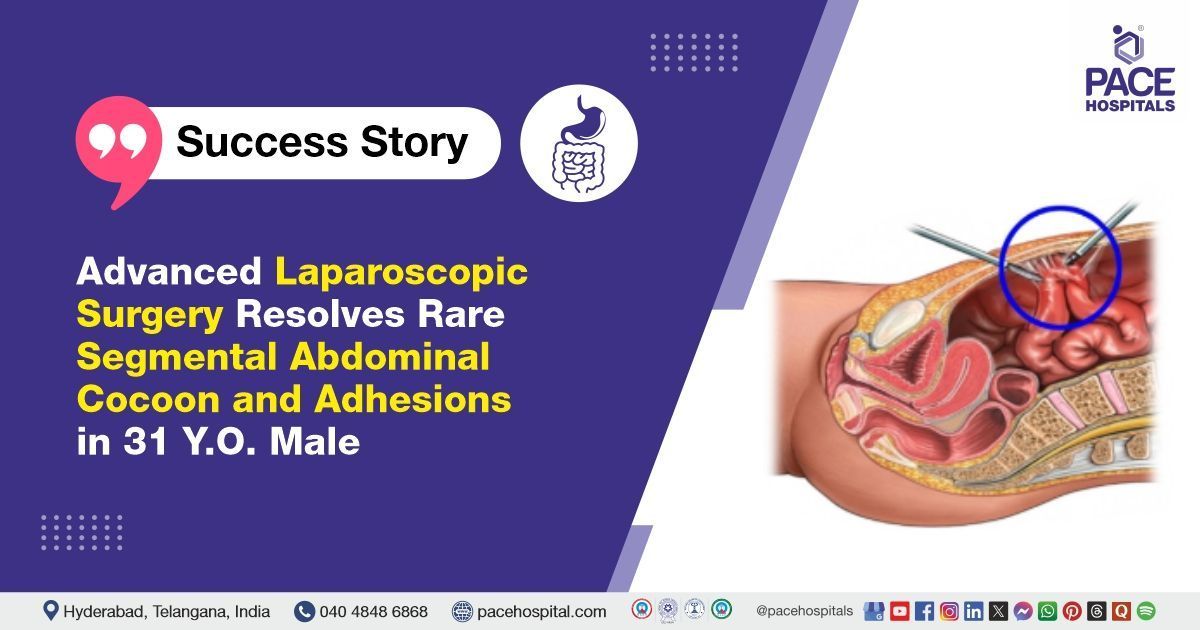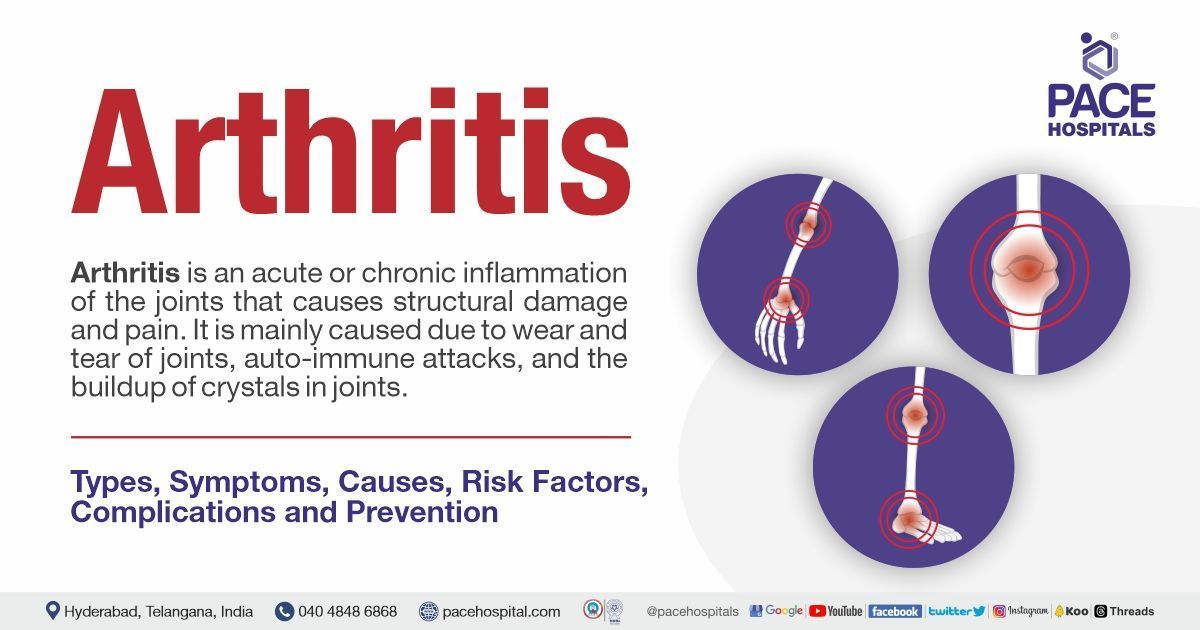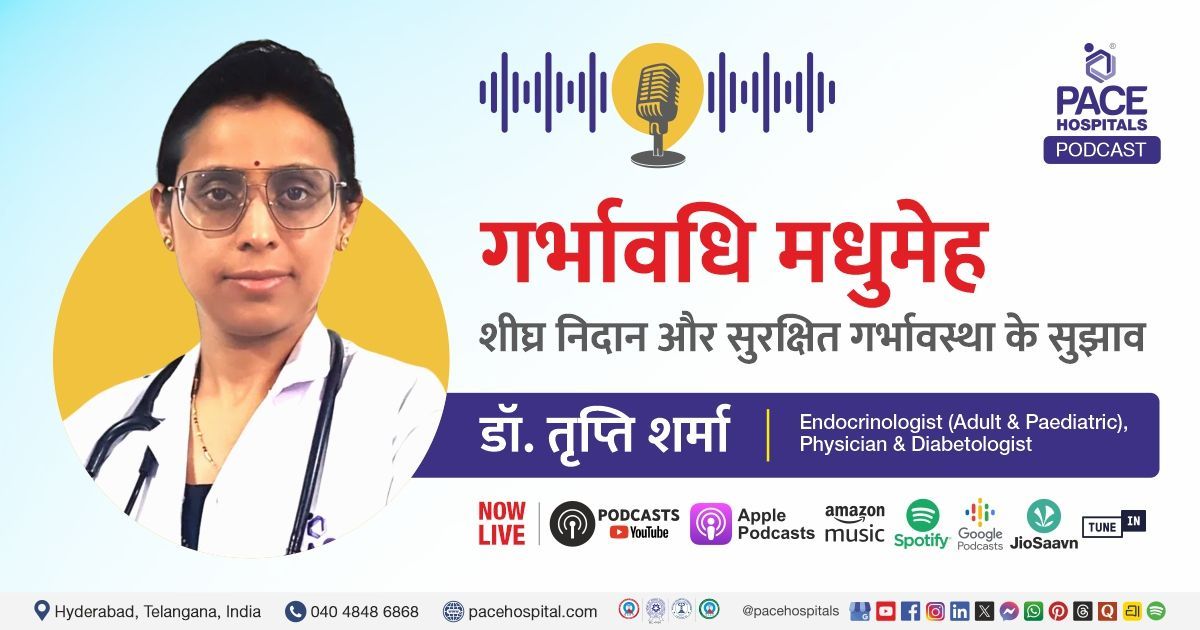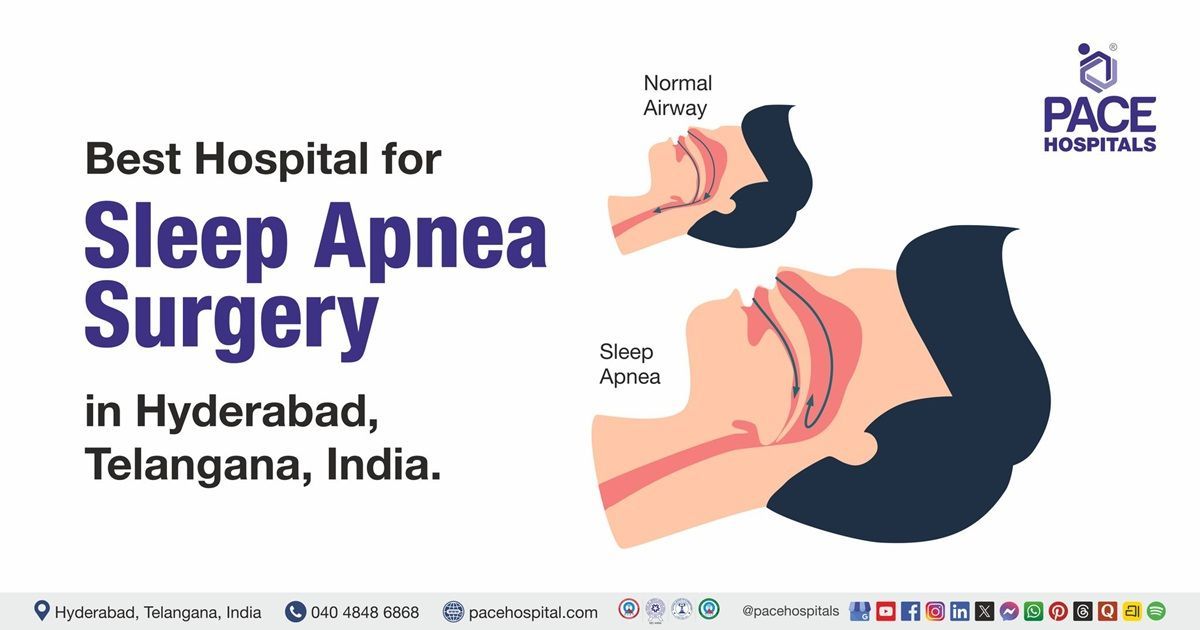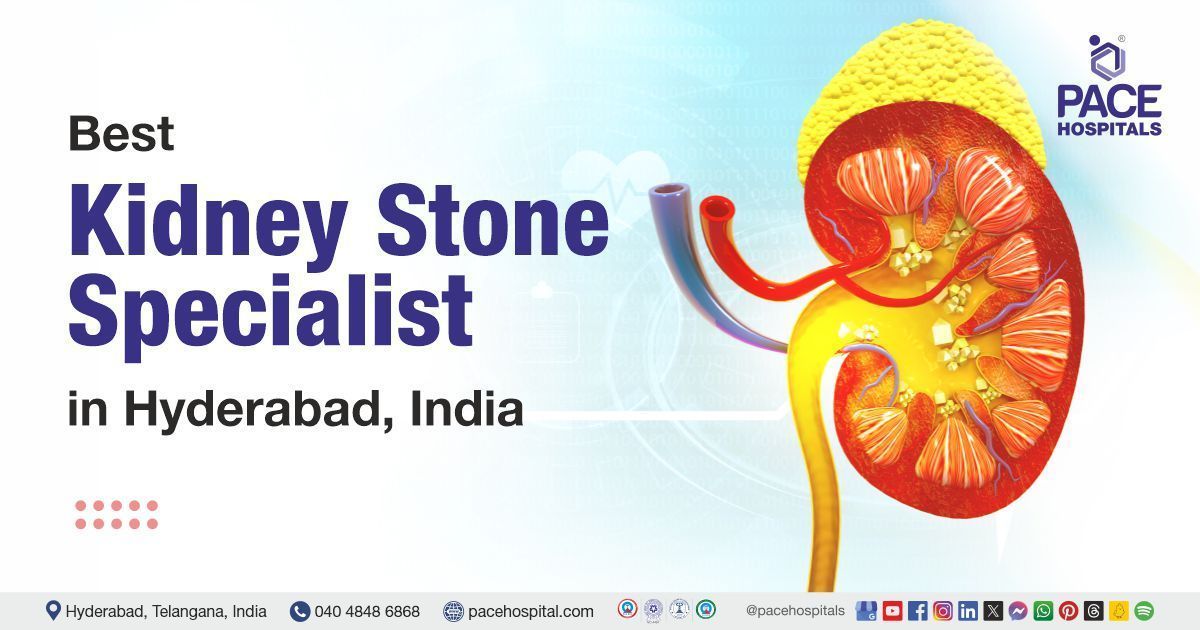Laparoscopic Surgery Resolves Rare Abdominal Cocoon in 31-Y.O. Male
The PACE Hospitals’ Gastroenterologist team successfully performed a laparoscopic adhesiolysis with release of the segmental cocoon for a 31-year-old male patient who had been suffering from recurrent pain in the right iliac region for the past two months, ultimately relieving his symptoms and improving his quality of life.
Chief Complaints
A 31-year-old male patient with a
BMI of 24 presented to the
Gastroenterology Department at
PACE Hospitals, Hitech City, Hyderabad, with complaints of recurrent pain in the right iliac region (specific area of the abdomen located in the lower right quadrant) for the past two months.
Past History
The patient had a history of appendectomy and was a known case of
non-alcoholic fatty liver disease (NAFLD), which was being managed conservatively.
Diagnosis
After being admitted to PACE Hospitals, the patient underwent a thorough review of his medical history and a detailed clinical examination by the gastroenterology team. Based on the findings and his history of previous abdominal surgery, there was a strong suspicion of postoperative adhesions. This led to the decision to proceed with diagnostic laparoscopy, which ultimately confirmed the need for laparoscopic adhesiolysis.
To support the diagnosis and assess the extent of complications, several investigations were conducted:
- A CT scan of the abdomen and pelvis was conducted to identify complications of postoperative adhesions, such as bowel obstruction or dilation.
- Cine MRI was used to assesses organ movement, detecting restricted mobility caused by postoperative adhesions, and is particularly useful in chronic pelvic pain.
Based on the confirmed diagnosis, the patient was advised to undergo Postoperative Abdominal Adhesions Treatment in Hyderabad, India, under the expert care of the Gastroenterology Department to ensure comprehensive management of his condition, minimize the risk of future complications such as bowel obstruction, and enhance his overall quality of life through timely surgical intervention and post-operative care.
Medical Decision Making (MDM)
After a thorough consultation with the consultant gastroenterologists, Dr. Govind R Verma, Dr. Sudhir, Dr. Padma Priya, and other specialists, including Dr. Suresh Kumar S, a comprehensive evaluation was carried out to determine the most appropriate diagnostic and therapeutic approach for the patient.
Taking into account his persistent right iliac region pain, history of previous abdominal surgery (appendectomy), and imaging findings suggestive of postoperative adhesions, the team concluded that Laparoscopic Adhesiolysis with Release of the Segmental Cocoon would be the most appropriate and effective therapeutic intervention to relieve symptoms and prevent further complications.
Surgical Procedure
Following the decision, the patient was scheduled for Laparoscopic Adhesiolysis Surgery in Hyderabad at PACE Hospitals, under the expert supervision of the Gastroenterology Department.
As planned, the doctors performed a diagnostic laparoscopy before the surgery. During the diagnostic laparoscopy, thickened small bowel loops and omental adhesions were observed in the right iliac fossa (RIF), along with the presence of a segmental cocoon—a localized form of encapsulating peritonitis.
Following these findings, the surgical team proceeded with laparoscopic adhesiolysis and the release of the segmental cocoon. The procedure was completed successfully without any intraoperative complications.
Laparoscopic adhesiolysis is a minimally invasive surgical procedure used to treat abdominal adhesions, particularly when a segmental cocoon forms. Adhesions are fibrous bands of tissue between organs, often due to previous surgeries or inflammation. A segmental cocoon is a fibrous encasement around the bowel or other abdominal organs, leading to restricted movement and potential complications like bowel obstruction. During laparoscopic adhesiolysis, small incisions are made, and a camera is inserted to visualize the area. The surgeon releases the adhesions and cocoon, restoring normal bowel movement and reducing complications compared to traditional open surgery.
Postoperative Care
The patient had a smooth postoperative recovery with no complications observed during the post-surgical period. During hospitalization, the patient received intravenous fluids, IV antibiotics, and supportive care to promote healing, prevent infections, and ensure optimal recovery following the surgical intervention.
Discharge Notes
The patient was discharged in a hemodynamically stable condition.
Discharge Medications
Upon discharge, the patient was prescribed a course of antibiotics to prevent postoperative infections, pain relievers to manage surgical discomfort, laxatives to promote regular bowel movements and prevent strain on the healing abdomen, and antilipidemic agents to manage his underlying non-alcoholic fatty liver disease (NAFLD) and support long-term liver health.
Emergency Care
The patient was informed to contact the Emergency ward at PACE Hospitals in case of any emergency or development of symptoms like fever, abdominal pain, or vomiting.
Review and Follow-Up Notes
The patient was advised to return for a follow-up visit with the Gastroenterologist in Hyderabad at PACE Hospitals one week after discharge. This visit was scheduled to monitor the recovery progress and ensure the appropriate management of the underlying gastrointestinal condition.
Conclusion
This case demonstrates the effectiveness of laparoscopic adhesiolysis with the release of a segmental cocoon, a procedure that carefully separates adhesed tissues and frees a portion of the intestines wrapped in a membrane. The surgery led to significant improvements in the patient's condition, highlighting the benefits of advanced minimally invasive techniques in enhancing recovery and managing postoperative complications.
The Role of Cine MRI in Diagnosing Intra-Abdominal Adhesions and Guiding Adhesiolysis
Cine MRI plays a supportive role in the preoperative evaluation of patients suspected of having intra-abdominal adhesions, particularly when considering adhesiolysis. Unlike standard imaging, cine MRI uses dynamic sequences to assess real-time organ movement. In cases of adhesions, restricted or abnormal motion of the bowel or adjacent structures can be visualized, suggesting the presence and location of adhesions.
This technique is especially valuable in detecting subtle or non-obstructive adhesions that may not be visible on CT scans. It is non-invasive, involves no radiation, and provides functional information rather than just anatomical details. For surgical planning, cine MRI helps in identifying areas of concern and predicting the extent of adhesiolysis required. It is particularly useful in patients with chronic abdominal or pelvic pain where conventional imaging may be inconclusive.
Overall, cine MRI aids in better diagnosis, surgical decision-making, and targeted intervention, making it a valuable tool in the hands of a skilled gastroenterologist / gastroenterology doctor when evaluating patients for potential adhesiolysis.
Share on
Request an appointment
Fill in the appointment form or call us instantly to book a confirmed appointment with our super specialist at 04048486868

